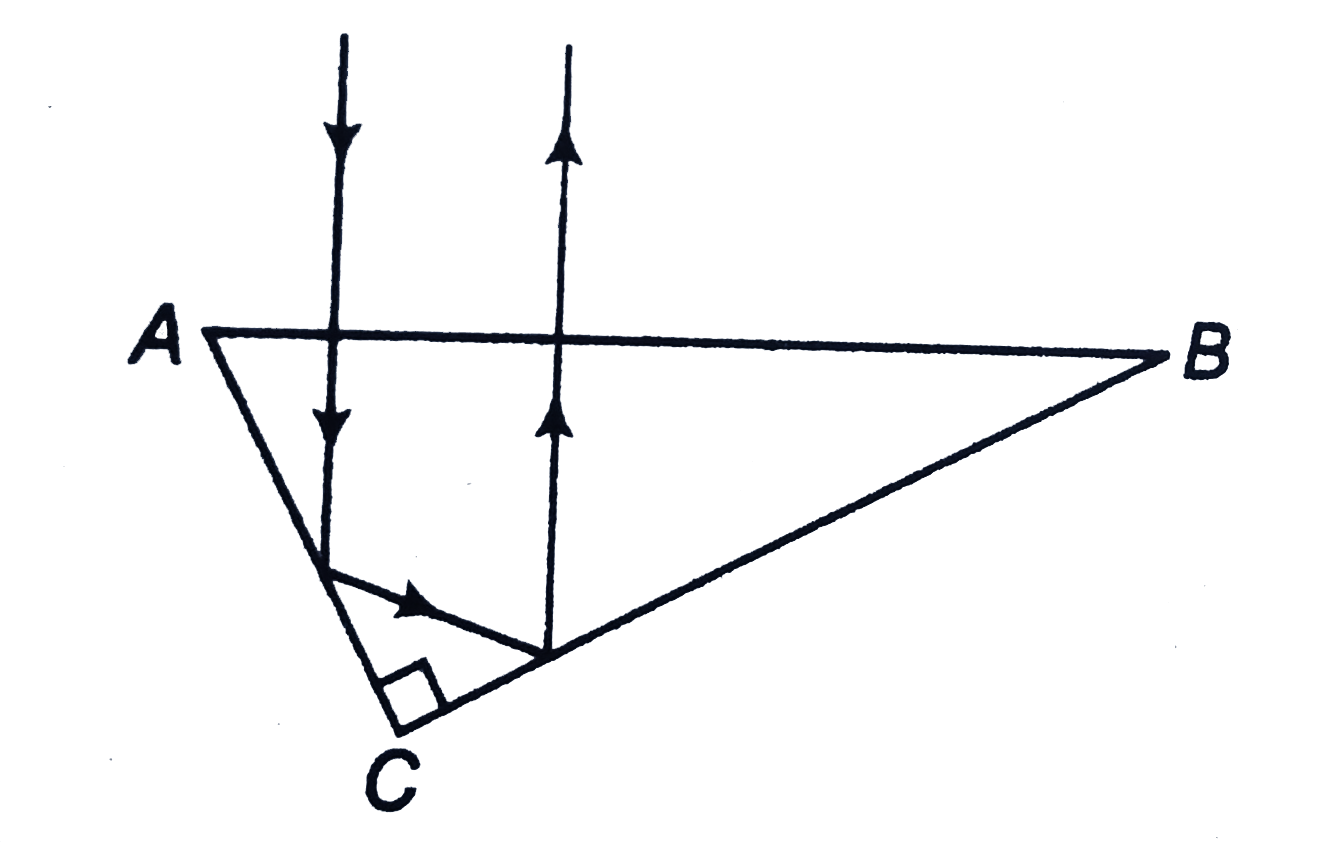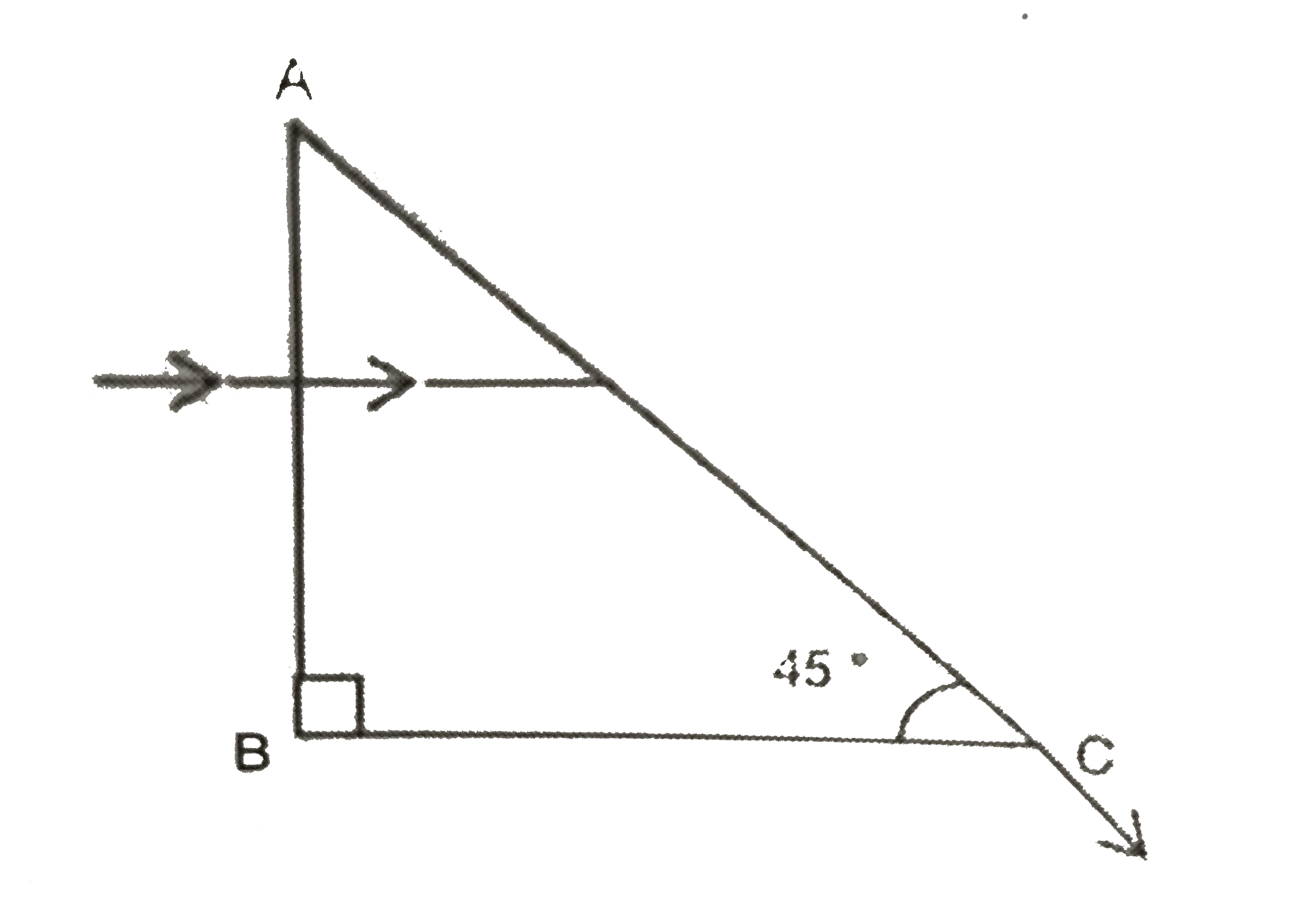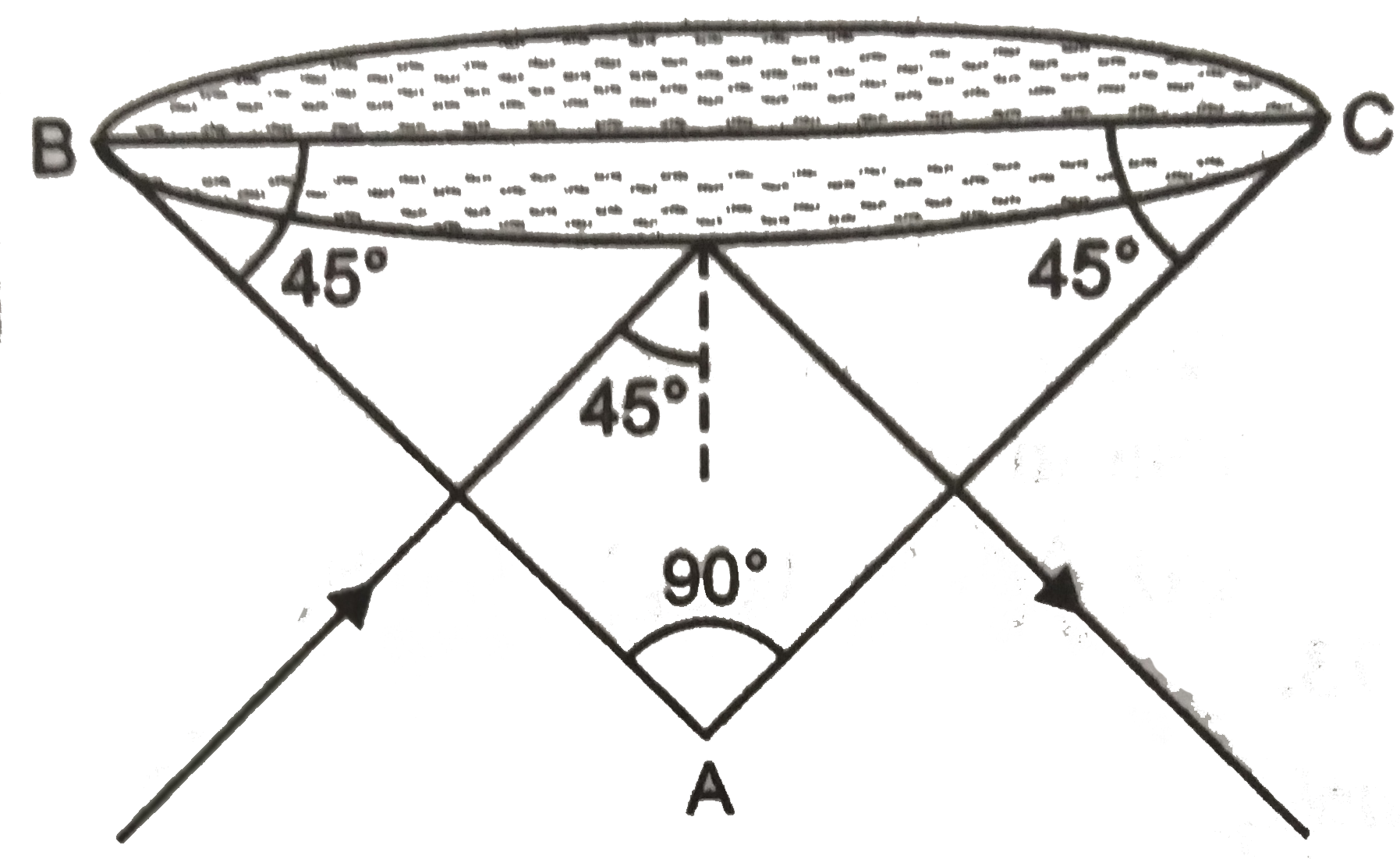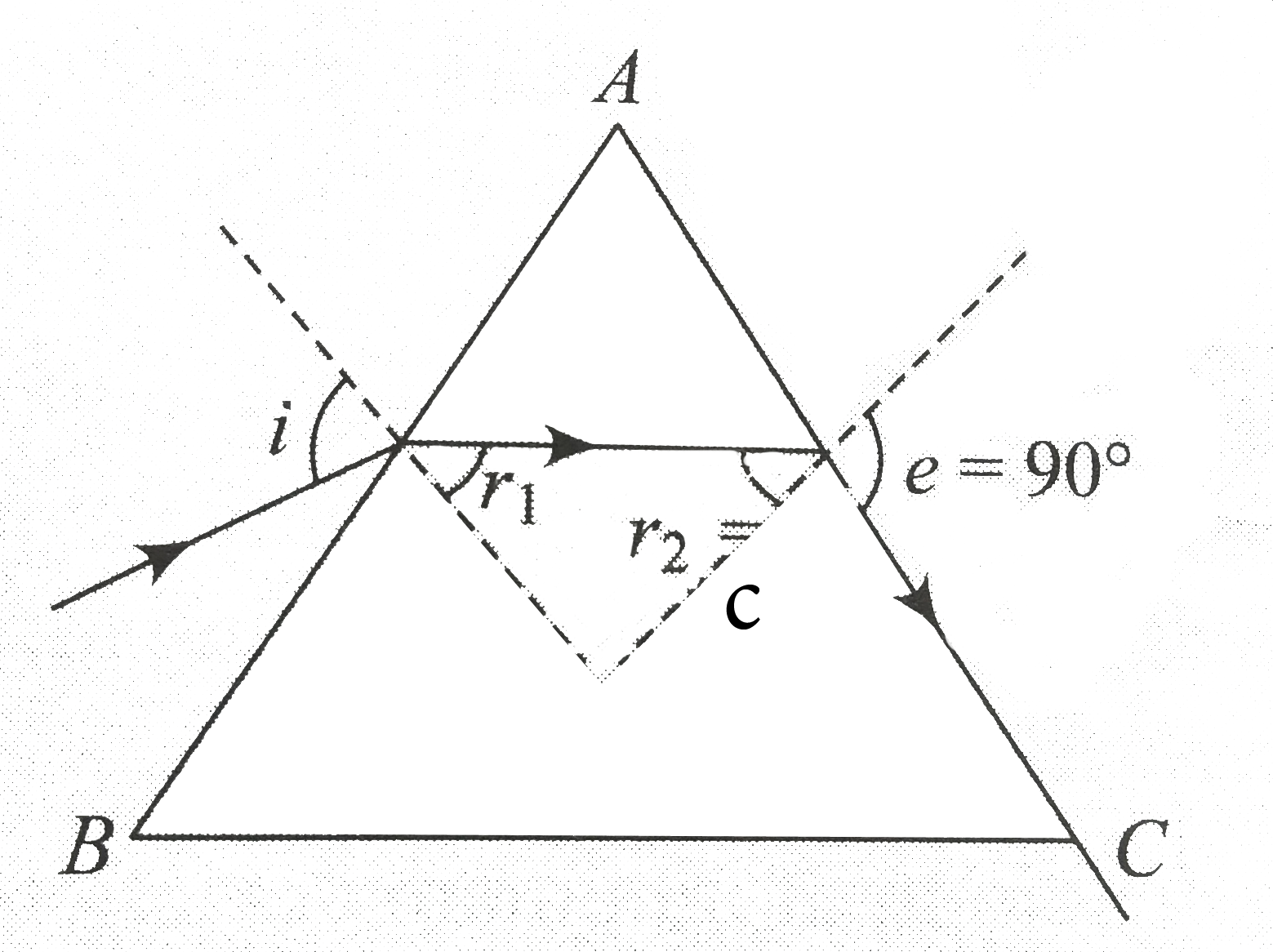A right prism is to be made by selecting a proper material and the angles A and B (B≤A) as shown in figure. It is desired that a ray of light incident normally on AB emerges parallel to the incident direction after two internal reflection.a. What should be the minimum refractive index μ for this to be possible? b. Forμ=53 is it possible to achieve this with the angle A equal to 60 degrees?

a. Consider the ray incident normally oN/AB ure. The asngle of reflectin at the surface AC is theta. It is clear from the ure that the angle of incidence ast th secon surface CB is 90∘−θ. The emergent ray will be paralel to the incidnet ray after two total inteN/Al refelection.The critical angle θc should be less than theta as well as 90∘−θ. Thus θc should be smaller than or equal to the smaler of θand90∘−θ,i.e,
theta_clemin(theta,90^@-theta)<br>Asmin(θ,90∘−θ)≤45∘,θc≤5∘
or sinθc≤1√2or1μ≤1√2
or μ≥1√2
Thus the refrctive index of the material of hte prism should be greater than or equal to √2. In this case teh gien ray can undrgo tow inteN/Al reflections for a suitable theta.
b. For μ=53 the critical angle θc is
sin−1(35)=37∘
As the ure suggests we consider the lightincident normally on the face AB. The angle of incidence θ on the surface AC is equal to θ=60∘. As this is larger than the cirtical angle 37∘, total internla reflection takes place here. The angle of incident at the surface CB is 90∘−θ=30∘. As this is less than teh critial ange, total interN/Al reflection does not take place at this surface.
Topper's Solved these Questions
- GEOMETRICAL OPTICSBOOK - HC VERMA ENGLISHCHAPTER - GEOMETRICAL OPTICSEXERCISE - Objective -1
15 Videos
- GEOMETRICAL OPTICSBOOK - HC VERMA ENGLISHCHAPTER - GEOMETRICAL OPTICSEXERCISE - Objective -2
7 Videos
- GAUSS LAWBOOK - HC VERMA ENGLISHCHAPTER - GAUSS LAWEXERCISE - Short Question
7 Videos
- LIGHT WAVESBOOK - HC VERMA ENGLISHCHAPTER - LIGHT WAVESEXERCISE - Question for short Answer
11 Videos
Similar Questions
A right angled prism is to be made by selecting a proper material and the angles A and B (BleA), as shown in figure. It is desired that a ray of light incident on the face AB emerges parallel to the incident direction after two internal reflections.

(a) What should be the minimum refractive index n for this to be possible?
(b) For n=53 is it possible to achieve this with the angle B equal to 30 degrees?
View SolutionA right angled prism is to be made by selecting a proper material and the angles A and B (B≤A),asshown∈figure.Itisdesiredtˆarayoflight∈cntonthefaceABemer≥sparal≤l→the∈cntdirectionaftertwo∫ernalref≤ctions.<br><imga≤ocr_imageload∈g=lazysrc=https://d10lpgp6xz60nq.cloudfront.net/physics_images/DCP_V05_C31_S01_034_Q01.pngwh=80%mx-autosty≤=background:white;><br>(a)Wˆshod––betheminiμmretive∈dexnforthis→bepossib≤?<br>(b)Forn=5/3isitpossib≤→aχevethiswiththe∠Bequal→30 degrees?
View Solution
Knowledge Check
An equilateral triangular prism is made of glass (μ=1.5). A ray of light is incident normally on one of the faces. The angle between the incident and emergent ray is
A60∘B90∘C120∘D180∘A ray of light is incident normally on one face of a right-angled isosceles prism and then it grazes the hypotenuse. The refractive index of the material of the prism is
A1.33B1.414C1.5D1.732
A right-angled prism is made up of a material of refractive index μ. It is desired that a light ray incident normally on PQ emerges parallel to the incident direction after suffering two total internal reflections . In which of the following conditions is this possible ?

View SolutionWhat is the refractive index of the material of the glass prism shown in the figure, if a ray of light incident normally at the face AB emerges along the face AC?

View SolutionA drop of liquid is spread over the hypotenuse of a right angled isosceles prism as shown in Fig. and a ray of light is incident normally on face AB of the prism. If refractive index of liquid is √2, then for total internal reflection to occur, refractive index of material prism should be :

View SolutionWhat should be the minimum value of refractive index of a prism, refracting angle A, so that there is no emergent ray irrespective of the angle of incidence?

View SolutionWhat should be the minimum value of refractive index of a prism, refracting angle A, so that there is no emergent ray irrespective of the angle of incidence?

View SolutionAn equilateral triangular prism is made of glass (μ=1.5). A ray of light is incident normally on one of the faces. The angle between the incident and emergent ray is
View Solution
